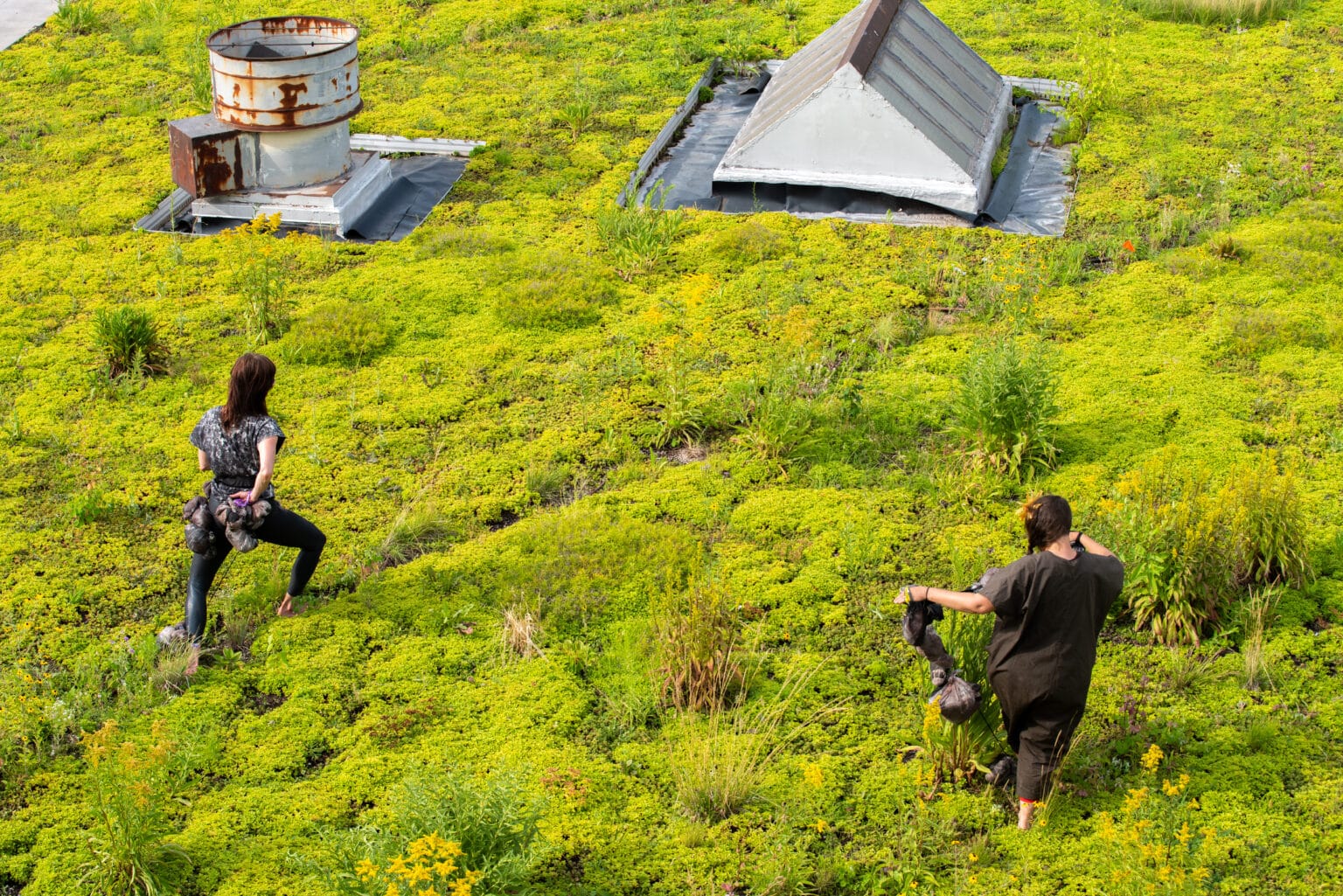
To Remember Amid Dismemberment
A conversation with eco-artist Marina ‘Heron’ Tsaplina about Soils and Spirit
In this interview, we are getting exciting glimpses into the development of a long-term creative environmental project—Orion’s Winter 2021 cover artist Marina ‘Heron’ Tsaplina’s Soils and Spirit, which will premiere in NYC in Fall 2026 and tour to multiple locations in forests across the Eastern Seaboard. Tsaplina is part of a cohort of contemporary eco-artists who pay close attention to intersectional aspects of their work: her experiences of disability, immigration, and settler status deeply inform the ethics of her encounter with place.

Indigenous artist moira williams (left) and Marina (right) improvising with the “soil phrases” prototypes on a NYC green-roof as part of the Kingsland Wildflower Festival, July 2023. ©Marina Tsaplina
Petra Kuppers: In Dream Puppet, you had a very specific place – an ancient forest in the Yaak Valley threatened by a logging project—that the piece was in conversation with. How does “place” function in Soils and Spirit?
Marina Tsaplina: First, I’m thrilled to be able to say that the “Black Ram” logging project was ruled as violating multiple environmental laws, and was recently halted! In Rick Bass’ words, “Dream Puppet planted a seed that germinated [and] helped create momentum” in the effort by so many to successfully protect that ancient place.
In Soils and Spirit, “place” is acknowledged as being fractured, moving, shifting, unstable. I am feeling into the fractured forests (both urban and rural) of the northeast, choosing locations that, together, tell a multidimensional story of some of what has happened to a portion of the “Eastern Deciduous Forest”. This means places where Soils and Spirit occurs will be where a community is working to return the land to Indigenous stewardship and working to build momentum around conservation. One place may be within a remaining sliver of an ancient forest that perhaps slipped through the chainsaws only due to a property dispute between two logging companies. One place will be where a deep history of incarceration of racialized and disabled people occurred. The final place will be on or near the U.S.-Canada colonial border, invoking the treaty histories between the U.S. Federal government and Native Nations that divided this land into two countries and through which land dispossession was enacted, while honoring the ecological continuity of the bioregion, and imagining what our future human-land relations may be.
The project is grappling with some of the ways ‘land’ is imagined and organized in the U.S. How strange it is that many of us have to drive for an hour or more to get to a forest, or how cities can obscure the earth from which they grow. I’ve begun imagining that each NYC tree holds a dream of the forest that once was here. The “civilization” vs. “wilderness” binary has haunted the Western world for some 4,500 years. The “wilderness” designation creates “no touch” zones, but it can also create Indigenous erasure. My question is, how do we culturally learn to touch the land without violation? This medley of locations for Soils and Spirit is a challenge to perceive the forests, soils, waters, and cities across the region as being both fragmented yet interconnected—to form an integrated ecological thinking through the locations that the project will engage. Forests, waters, soils, histories, people.
PK: Have specific forests been identified?
MT: Two locations have already been identified, but until all resources and logistics (permits, insurance, rigging safety, etc.) are in place, I can’t publicly share them. Locations will be released before the premier of the work in 2026 in Lenapehoking (NYC). During the installation of Dream Puppet—which was only a 24-hour installation with no performance or audience component— we interfaced with authorities and border patrol, even though theoretically it was on public land, and “the public” has access. Some locations may be logistically easier—for example, a 20-acre preserved forest on “private” land. One of the most important components for deciding locations is whether there’s a community around the forest with whom Soils and Spirit is value-aligned, and does this community want to have the experience of Soils and Spirit to build momentum and deepen ecological intimacy? That’s where the magic happens.
I’ve begun imagining that each NYC tree holds a dream of the forest that once was here.
Continue reading interview at Orion Magazine, here